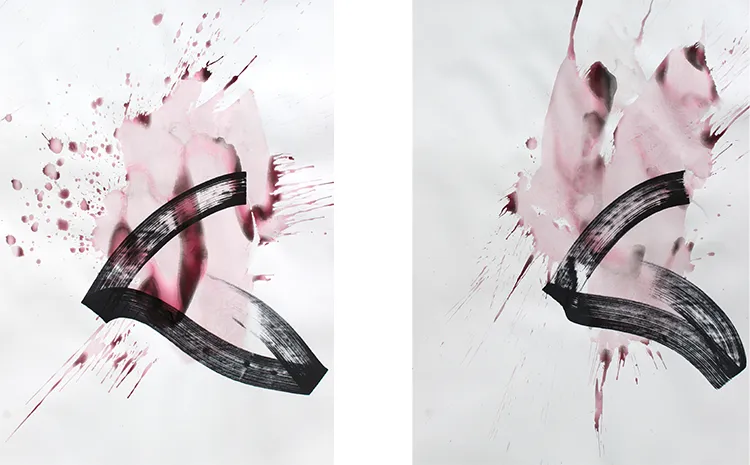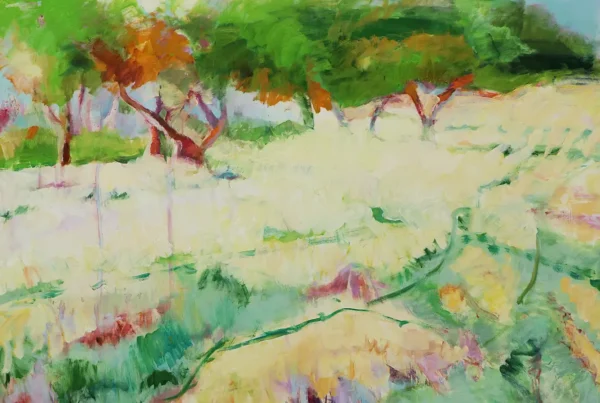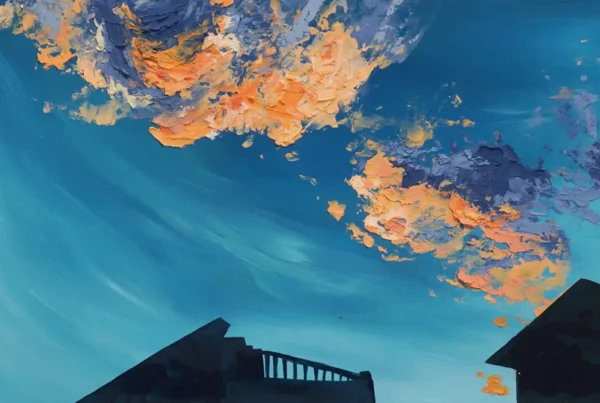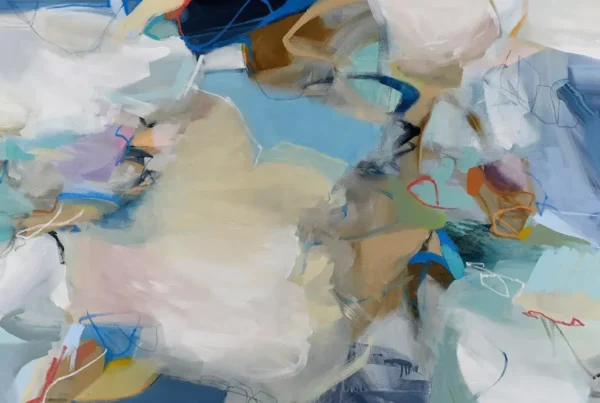“My background in eastern somatic practices and philosophy has led me to reconsider my art process, with these experiences/insights in mind.”
A Journey from Youthful Curiosity to Artistic Mastery
Lance Kerr, a New Zealand-based contemporary painter, has built a remarkable career founded on a deep passion for visual communication and philosophical inquiry. His artistic journey began in his formative years when he developed a fascination with book illustrations and a love for copying them to teach himself how to draw. These early experiences set the foundation for Kerr’s artistic path, and by the time he reached high school, art had become the only subject that truly captivated him. This dedication was solidified when he visited his art teacher’s studio, a pivotal moment that ignited his passion for painting. Over time, Kerr was particularly drawn to the works of Cezanne, which further fueled his determination to pursue a career in art.
Kerr’s formal education in visual communication at the Ara Institute in Christchurch was followed by a stint as an art director and designer for the youth magazine Pod. However, his desire to express his personal artistic vision soon took over, and he began a dedicated studio practice that has spanned over two decades. His autodidactic nature led him to immerse himself in various philosophical frameworks, including Integral Philosophy, Buddhism, and Japanese thought. These interests have had a profound influence on his work, shaping not only his creative process but also the themes that dominate his large-scale abstract paintings.
In addition to his visual pursuits, Kerr has practiced Qigong for 20 years and is now a qualified instructor in Forest Rock Qigong. This deep engagement with Eastern somatic practices and philosophy has encouraged him to reexamine his artistic methodology. His exploration of how these practices intersect with the act of painting has introduced a unique meditative and mindful dimension to his work, allowing him to integrate the body and mind into his creative process.

Lance Kerr: Abstraction Through Minimalism and Luminosity
Kerr’s artistic style is an exploration of abstraction, characterized by a minimalist yet expressive approach. His work is distinguished by the use of vivid and vibrant colors, which are often employed to explore themes of luminosity and spatial awareness. Unlike many abstract painters, Kerr deliberately preserves significant portions of his canvas or paper, giving his work a distinctive sense of “refined space.” This practice allows the empty areas to act as a counterbalance to the intensity of form and color, creating a harmonious interaction between presence and absence within his compositions.
Over the years, Kerr has engaged with a range of themes, from the interconnectedness of wholes and parts, inspired by his study of Integral philosophy, to more recent explorations of liminal spaces and metacognition. His travels to urban environments have influenced a series of works that reflect on the transient nature of cities, often referencing graffiti and the layering of urban decay. His ability to extract beauty and meaning from these fleeting moments and physical spaces speaks to his keen observational skills and philosophical leanings.
The fusion of Eastern and Western thought is another recurring theme in his work, especially since his transformative trip to Japan in 2019. This journey inspired him to create a body of work that examines the balance between structure and space, reflecting on how different cultural philosophies can coexist and inform each other. By staining his canvases and embracing a raw, elemental approach to painting, Kerr has developed a visual language that straddles two worlds, honoring both his Western artistic heritage and the Eastern influences that have shaped his philosophical outlook.

The Influence of Space and Process on Creation
Kerr’s creative process is highly dependent on his workspace, which must be spacious enough to accommodate his large-scale works and allow for movement around them. Whether he is working vertically or horizontally, the freedom to move fluidly is essential to his technique, which often involves the use of large amounts of water, staining, and water blasting. These methods require careful attention to drying times, making natural light and a warm environment vital components of his studio.
Distractions, however, are something Kerr prefers to avoid. He is meticulous about planning his painting sessions, ensuring that he can fully immerse himself in the process without interruption. This intentional focus allows him to engage deeply with his work, following a clear plan for what he intends to achieve during each session. Kerr’s lifestyle is organized around his artistic practice, demonstrating his commitment to maintaining the optimal conditions for creativity.
A distinctive element of Kerr’s approach is his willingness to experiment with new mediums. Early in his career, he began working with inks on paper, exploring their fluidity and the way they interacted with the surface. His discovery of molding paste—a product recommended to him at an art supply store—marked a turning point in his practice. This material, combined with fluid acrylics, allowed him to develop a new body of large-scale abstract works that further solidified his unique style. His earlier experiences working with oil paint also contributed to his understanding of the possibilities and limitations of various mediums, allowing him to refine his technique over time.

Lance Kerr: The Significance of “Two Worlds” and Future Aspirations
One of Kerr’s most significant works is titled Two Worlds, created after his life-changing trip to Japan in 2019. This piece holds a special place in his heart as it encapsulates the profound impact that the visit had on his artistic vision. Long intrigued by Japanese culture and its arts, Kerr approached this work with the desire to distill his process down to its most essential elements. In Two Worlds, he limited both texture and color, focusing instead on the concept of “Ma”—a Japanese term that signifies empty space. The resulting composition is mostly devoid of form, yet filled with meaning, embodying Kerr’s deepening understanding of how emptiness and presence can coexist in a single work of art.
This piece also marks a turning point in Kerr’s exploration of Eastern and Western philosophies, a theme that continues to drive his current work. His fascination with the tension between structure and space is evident in his ongoing projects, where he creates luminous abstracts that evoke a sense of balance between opposing forces. His ability to translate complex philosophical ideas into visual form is what sets his work apart, making it both intellectually and aesthetically engaging.
Looking to the future, Kerr has his sights set on an exciting project that combines his love of art and travel. A close friend based in Los Angeles has invited him to create a new body of work for an exhibition, with the entire process being documented on video. This project not only represents an opportunity for Kerr to reach new audiences but also to further evolve his artistic practice in an international context. The idea of capturing the creative process on film adds another layer of depth to the project, allowing viewers to witness the intricacies of his method and the philosophy that underpins it.






